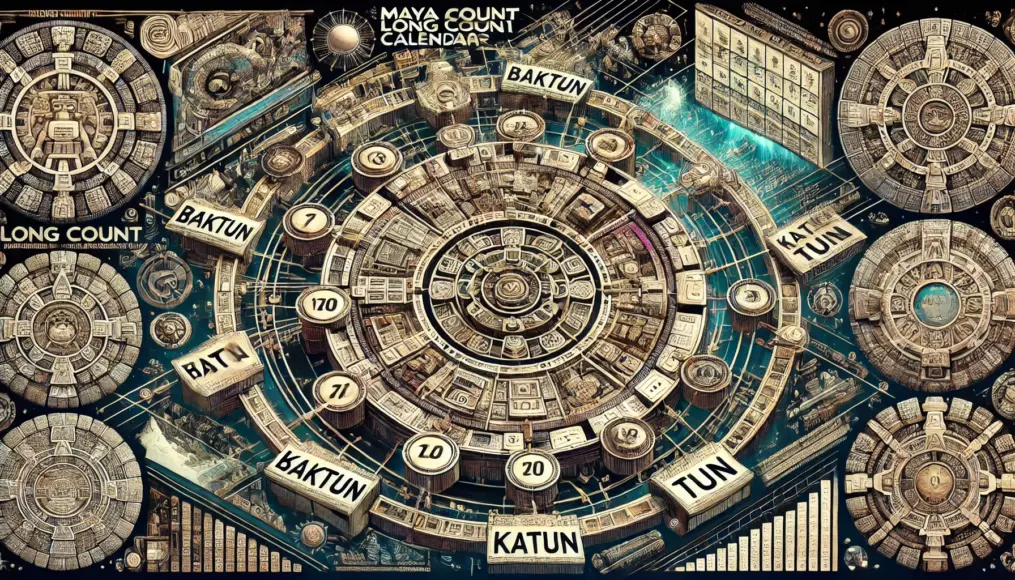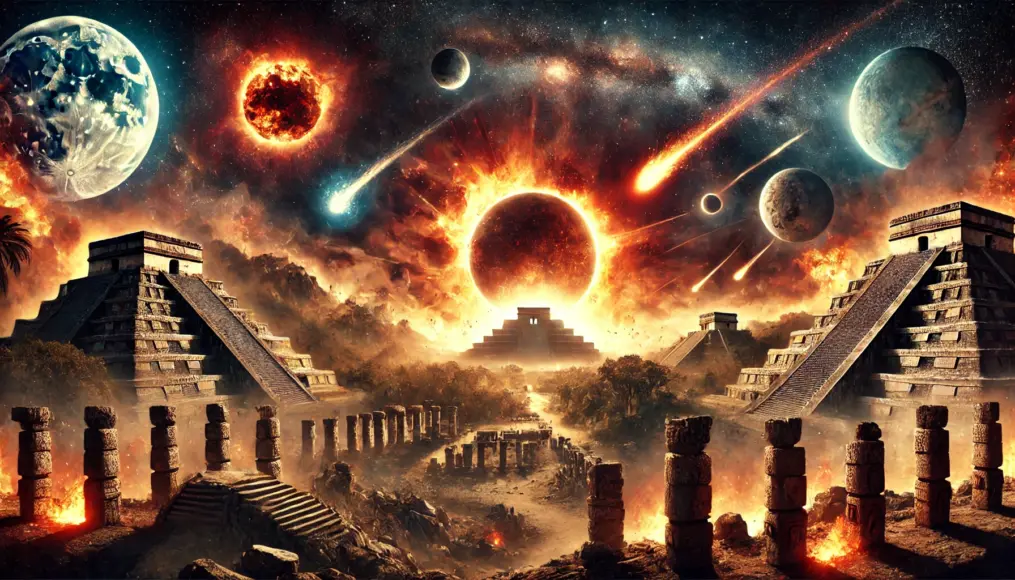December 21, 2012.
This date struck fear into the hearts of many as the supposed “end of the world.”
At the center of this global panic was the Mayan calendar and its unique Long Count system, which was widely misunderstood.
In this article, we’ll dive into the structure of the Mayan calendar, the origins of the 2012 doomsday prophecy, and what it truly symbolizes.
How Does the Mayan Calendar Work?

The Mayan calendar served as a critical tool for daily life, religious rituals, and astronomical observations.
Renowned for its precision, the calendar system rivaled even modern methods in accuracy.
The Structure and Types of Mayan Calendars
The Mayans used multiple calendar systems, but three stand out for their significance:
- Haab’ (Solar Calendar)
This 365-day solar calendar consisted of 18 months (20 days each) and an additional 5-day period known as Wayeb’.
It was used to track agricultural cycles and seasonal changes. - Tzolk’in (Ritual Calendar)
This 260-day calendar was primarily used for religious purposes, combining 13 numbers with 20 day names.
It played a key role in ceremonies and divination. - Long Count Calendar
Designed to record historical events and predict future ones, this calendar measures time in cycles of approximately 5,125 years.
The Precision of the Long Count Calendar
The Long Count calendar is composed of five time units:
Kin (1 day), Winal (20 days), Tun (360 days), K’atun (7,200 days), and B’aktun (144,000 days).
- Starting Date
The calendar begins on August 11, 3114 BCE, marking the creation of a new era in Mayan mythology. - Interpreting the “End Date”
December 21, 2012, marked the end of the 13th B’aktun.
While many interpreted this as the end of the world, it actually signified the beginning of a new cycle.
The Astronomical Basis of the Mayan Calendar
The Mayans possessed advanced astronomical knowledge and accurately predicted solar eclipses and planetary movements.
Their calendar was not just a method for marking time but also a guide for agriculture and religious practices.
The Origins and Misinterpretations of the 2012 Doomsday Prophecy

The 2012 doomsday prophecy emerged from a blend of mystical interpretations of the Mayan calendar and modern cultural influences.
The Misunderstandings Behind the Prophecy
- Misinterpreting the “End”
In Mayan tradition, the end of a calendar cycle simply meant the start of a new one.
However, this was misconstrued as the end of the world. - Translation and Interpretation Errors
Some inscriptions were translated in ways that emphasized apocalyptic imagery, fueling fears. - Modern Media Influence
Films, books, and sensationalist reports amplified the prophecy, creating global hysteria.
The Impact of the Prophecy
- Social Anxiety
In some regions, people stockpiled supplies and prepared for disaster. - Philosophical Reflection
For others, the prophecy sparked deeper questions about humanity’s future and the meaning of “endings.”
The Scientific and Astronomical Significance of the Mayan Calendar

The Mayan calendar reflects an astonishing understanding of astronomy, which continues to amaze scientists today.
Achievements in Mayan Astronomy
- Planetary Movements
The Mayans accurately calculated Venus’s orbit (584 days) and used it to time ceremonies. - Eclipses
They predicted solar and lunar eclipses with remarkable accuracy. - Astronomical Observatories
Structures like those at Chichen Itza were built to track celestial events.
The Modern Relevance of the Mayan Calendar
- Agricultural Applications
The calendar was essential for determining optimal planting and harvesting times. - Sustainability Lessons
The Mayan emphasis on harmony with nature offers insights into modern environmental challenges.
The Concept of Endings and New Beginnings

The 2012 prophecy, while rooted in misunderstanding, became a symbol of both fear and hope for humanity.
A New Beginning
- Cycles of Renewal
For the Mayans, the end of a cycle marked the start of another, symbolizing renewal and transformation. - Modern Application
Embracing this perspective can inspire positive change and resilience in the face of challenges.
Lessons from the Mayan Civilization

The Mayan calendar holds timeless lessons for modern society.
The Importance of Cyclical Time
Unlike the linear time concept dominant today, the Mayan belief in cyclical time teaches us that endings can lead to growth and renewal.
- The Philosophy of Rebirth
Challenges and failures can be viewed as opportunities for reinvention. - Sustainability
The Mayan emphasis on balance with nature offers valuable guidance for tackling environmental issues.
Conclusion
The Mayan calendar and the 2012 doomsday prophecy are a fascinating intersection of myth and misunderstanding.
They reveal profound wisdom about humanity’s relationship with time, nature, and the cycles of life.
Rather than fearing the end, the Mayans embraced it as a chance for renewal.
We too can draw inspiration from their perspective to create a brighter future.




Comment